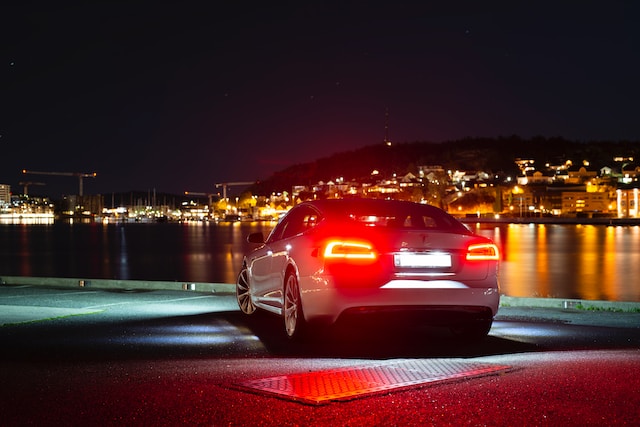According to data from the National Highway Traffic Safety Administration, 49% of all fatal motor vehicle crashes take place after dark. This is despite the fact that roads typically have less traffic after dark than during daylight hours. The statistic demonstrates the danger of driving in the dark and just how important it is to take extra precautions before making journeys at night.
Here are three tips for being a more responsible driver in the dark:
1. Be extra vigilant when driving at low speeds in an electric vehicle
A big benefit of electric vehicles is that they’re significantly quieter than traditional vehicles because they don’t produce engine noise. The problem is that pedestrians and animals can have a more difficult time hearing electric vehicles coming.
When electric cars are driven at high speeds, it’s possible to hear them from the noise generated by their tires or from wind resistance. When they’re driven at low speeds, such as when first pulling away or travelling around urban areas, this is much less likely. The National Highway Traffic Safety Administration requires all electric vehicles to emit warning sounds when travelling at low speeds, but many electric vehicles are still significantly quieter than gasoline cars.
When driving an electric vehicle at low speeds in the dark, take extra care to look out for pedestrians and animals just in case they don’t hear or see your car coming.
2. Adopt healthy headlight habits
We rely on our car’s headlights to see and be seen by others when driving at night so it’s important to adopt healthy habits surrounding the use of your headlights. Check that your headlights are working correctly before every journey. It’s helpful to keep spare bulbs on hand if you often drive at night so that you can replace expired ones right away.
When you’re on the road, dip your headlights when you see an oncoming vehicle, when you come up behind another vehicle, and when you overtake a vehicle. This is to avoid dazzling other drivers. Finally, if you become dazzled by another vehicle’s headlights, slow down or come to a complete stop until your vision is restored.
3. Get plenty of rest and don’t drive tired
Human error accounts for around 88% of accidents, which goes to show how important it is to be alert and focused when in control of a vehicle. When you’re driving in the dark, visibility is reduced and you have to be extra vigilant to identify potential hazards. People are often more tired when they drive at night after a long and busy day.
If you have a long journey to make, make sure you are well-rested before you set off and schedule plenty of breaks along your route. When you feel tired, find somewhere safe to stop for a break. Get out of the car to stretch your legs and get some fresh air, sip a coffee or other caffeinated drink, and wait at least 15 minutes before setting off again.
Take extra care when driving in the dark
You should always be vigilant of potential hazards when behind the wheel of a car, but it’s particularly important when driving in the dark. The three tips above will help you be a more responsible driver during your nighttime journeys.

